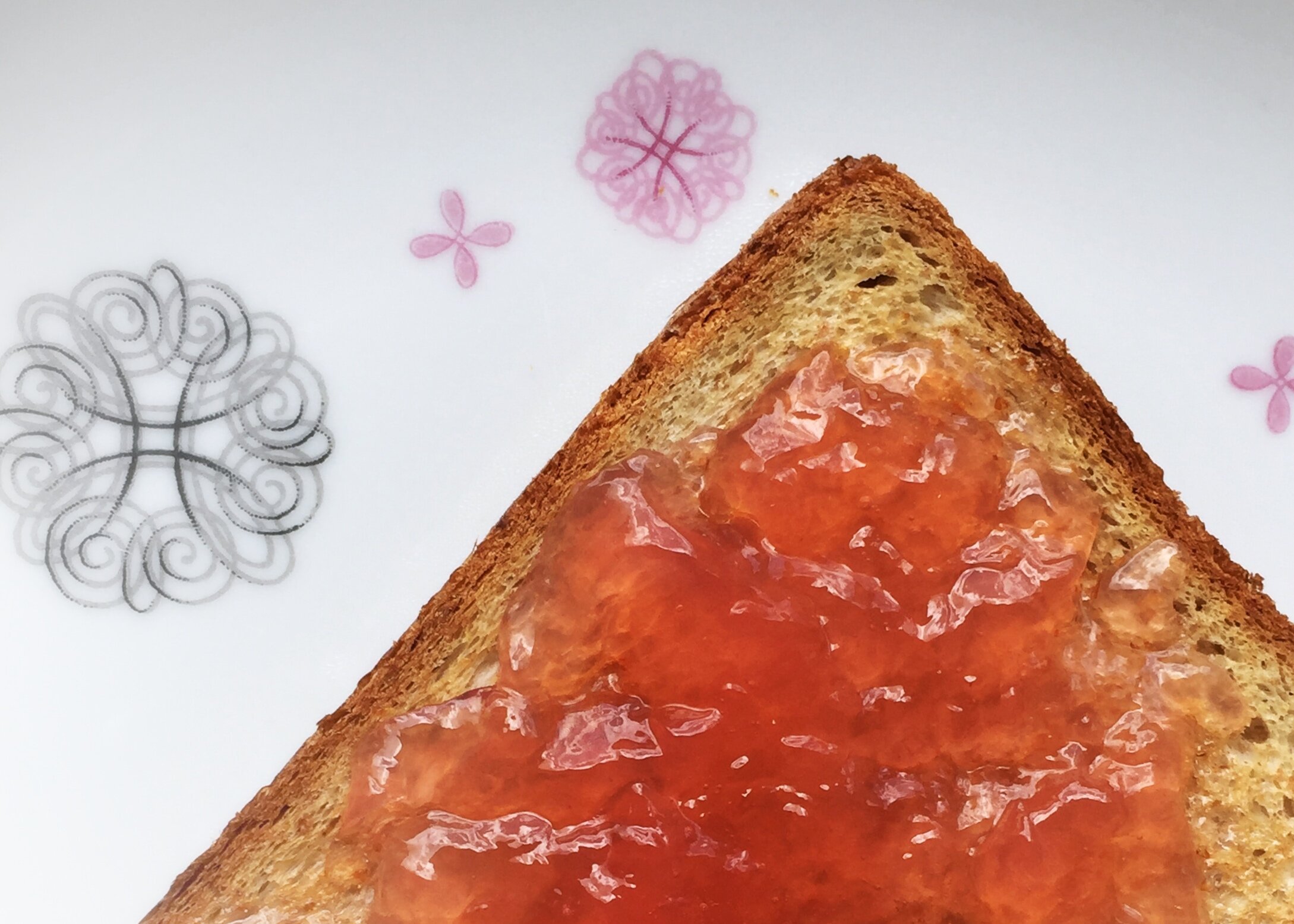Recipe Experiments with ‘Ulu Flour
Experimenting with ʻulu (breadfruit) flour from Kahumana Organic Farms. Below are my current recipe notes, which I may update with more information and photos as I continue to experiment. I’m currently short on time to do extras like taking nice photos!
A slice of the ʻulu maiʻa bread, showing the pieces of cooked, ripe breadfruit inside.
Recipe: ʻUlu Maiʻa Bread with Whole Wheat Flour
1 1/2 cups very ripe mai’a (banana), mashed or pureéd.
3 eggs, large.
2/3 cup sugar.
1 cup ‘ulu flour.
1/2 cup whole wheat flour.
1 teaspoon baking soda.
1/4 teaspoon salt.
pinch of 5-spice powder (optional; can use cinnamon instead).
2 cups of ripe ‘ulu (breadfruit), cooked, peeled, cored, and diced into roughly 1/2” square cubes.
8” x 8” x 2” baking pan, greased or lined with parchment paper.
Preheat oven to 350 degrees Fahrenheit.
Beat together the banana and eggs (I do this by hand with a dough whisk). Stir in the sugar. Stir in the flours, baking soda, and salt (as well as the five-spice or cinnamon, if you are using it). Fold in the diced ‘ulu. Pour into the baking pan and bake for 30 - 40 minutes.
Recipe Notes
Spices: the Chinese five-spice or cinnamon is there to enhance the flavor of the ‘ulu. You can add more if you want to be able to taste the spices; my goal is to be able to taste the ‘ulu.
Cooking the ‘ulu: can be baked or steamed until tender. I use ‘ulu that is as ripe as possible - soft and fragrant.
Steam: cut into quarters and steam for 30 - 40 minutes, until tender. Pull out the core. Peel the skin off.
Baking pan: I use this size to try to keep this bread from getting really dense (I’m concerned that the weight of the dough in a loaf pan would make it really solid). This could also work as muffins.
Recipe: ‘Ulu Mai’a Bread, Gluten Free
1 1/2 cups very ripe mai’a (banana), pureéd.
3 eggs, large.
2/3 cup sugar.
1 1/2 cups ‘ulu flour.
1 teaspoon baking soda.
1/4 teaspoon salt.
pinch of 5-spice powder (optional; can use cinnamon instead).
2 cups of ripe ‘ulu (breadfruit), cooked, peeled, cored, and diced into roughly 1/2” square cubes.
8” x 8” x 2” baking pan, greased or lined with parchment paper.
Preheat oven to 350 degrees Fahrenheit.
Purée the banana (I use a stick blender for this). Beat the eggs and sugar with a hand mixer until pale yellow and about triple in volume. Stir together the puréed banana and ‘ulu flour. Add to the banana mixture the baking soda and salt (as well as the five-spice or cinnamon, if you are using it), and stir well. Fold in the egg and sugar mixture. Fold in the diced ‘ulu. Pour into the baking pan and bake for 30 minutes.
Recipe Notes
Because there is no gluten in this, my goal is to get more air into the dough.
This bread came out dry. Possibly overbaked (I left it in for 40 minutes); next time I plan to add some liquid. Also considering using brown sugar instead of white sugar, for more moisture and a little more flavor.
Where to buy ‘ulu flour and ‘ulu
‘Ulu Flour
Kahumana Organic Farms Ulu Flour / Hawaiian Breadfruit Flour
The ‘ulu flour I am using came from Kahumana Organic Farms. Kahumana Organic Farms is a nonprofit co-creating a healthy, inclusive and productive farm-based community with homeless families, people with disabilities and youth on Oʻahu. You can purchase fruits, vegetables, and ʻulu flour from the farm through their Community Supported Agriculture (CSA) subscriptions, and farmers markets on Oʻahu (please note, though, that at the time I am writing this, not all markets are open).
I have not been able to find ‘ulu flour for purchase elsewhere, and I haven’t tried making it myself at home.
Kumu Myles: Ulu Flour on YouTube. Video shows ‘ulu being shredded, dried, ground and sifted.
‘Ulu
Fresh ‘ulu can be found in Hawai’i for sale at farmers markets, Asian groceries, Polynesian markets, and some grocery stores.
The Roots Program in Kalihi (O’ahu) partners with farmers to provide Polynesian cultural foods, including ‘ulu.
Cooked, frozen ʻulu can be purchased from the Hawaiʻi ʻUlu Cooperative; shipping is free in the state of Hawaiʻi.









